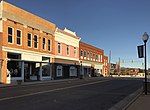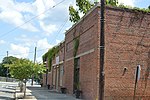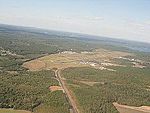Randle House
1835 establishments in North CarolinaCentral North Carolina Registered Historic Place stubsFederal architecture in North CarolinaGreek Revival houses in North CarolinaHouses completed in 1835 ... and 4 more
Houses in Stanly County, North CarolinaHouses on the National Register of Historic Places in North CarolinaNational Register of Historic Places in Stanly County, North CarolinaPlantation houses in North Carolina

Randle House, also known as the Randall House, is a historic plantation house located near Norwood, Stanly County, North Carolina. It was built about 1835, and is a two-story, transitional Federal / Greek Revival style frame I-house dwelling. It is sheathed in weatherboard and has a gable roof. It has a gable roofed ell and attached kitchen/dining building. The front facade features a hipped roof porch.It was added to the National Register of Historic Places in 1992.
Excerpt from the Wikipedia article Randle House (License: CC BY-SA 3.0, Authors, Images).Randle House
Randalls Ferry Road,
Geographical coordinates (GPS) Address Nearby Places Show on map
Geographical coordinates (GPS)
| Latitude | Longitude |
|---|---|
| N 35.2625 ° | E -80.104166666667 ° |
Address
Randalls Ferry Road 18523
28128
North Carolina, United States
Open on Google Maps








